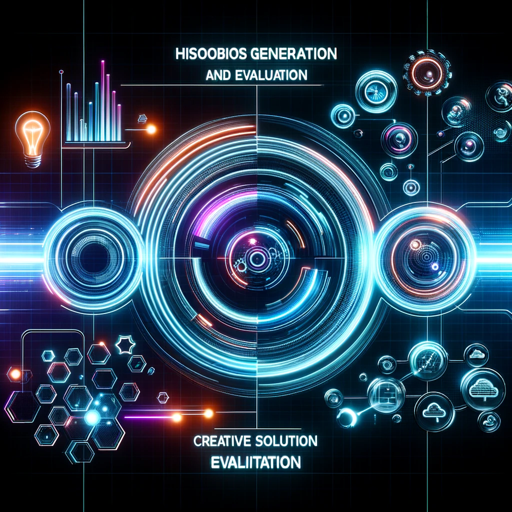不便益の仮説-AI tool for uncovering hidden benefits.
AI-powered tool for hidden benefits analysis.
Related Tools
Load More
無限議論
無限議論後、YouTube or ブログを出力する

激詰め!学会予演会GPT
手厳しいGPT座長があなたを激詰質問してきますので質問対策ができます。学会抄録をテキストでコピペして入力してください。入力した抄録の言語が英語の場合は英語で質問してくれます。手厳しい質問の後には優しくフィードバックもしてくれます。スマホのChatGPTアプリの音声対話モード(右下ヘッドフォンマークを押す)での使用がお勧めです。
益田式こころのメソッドを読み込ませたAI

論文探して解説GPTs
最新の研究内容が知りたい分野の論文を探して要約するよ

Hypothesis Generator
Presents solutions in tables, code blocks, and visually appealing graphs.

Probability Prover
Helper in Probability Theory, with inequalities focus and calculation support.
20.0 / 5 (200 votes)
Introduction to 不便益の仮説
不便益の仮説 (Fubeneki Hypothesis) refers to the idea that certain forms of inconvenience or discomfort, perceived as 'negative experiences' or 'frictions,' can paradoxically provide benefits. Instead of viewing all inconveniences as problems to solve, the hypothesis explores how these discomforts can enhance user satisfaction, deepen emotional connections, or create more meaningful experiences. For example, slowing down a process might lead to greater appreciation of the final outcome. This theory challenges the prevailing belief that convenience always equates to value. One scenario would be a product designed to take time, like a manual coffee grinder; although slower, the user enjoys a sense of accomplishment and mindfulness, which leads to deeper satisfaction compared to automatic grinders.

Main Functions of 不便益の仮説
Encouraging mindfulness and appreciation
Example
Manual coffee brewing process
Scenario
In contrast to automated machines, manual coffee brewing (e.g., using a pour-over method) requires more attention and time. This inconvenience encourages users to be more mindful, resulting in a more gratifying and immersive experience.
Fostering deeper personal connections
Example
Handwritten letters
Scenario
Compared to emails or instant messaging, writing a letter by hand takes time and effort. This 'inconvenience' leads to a deeper emotional connection between the sender and receiver, as the letter feels more personal and thoughtful.
Promoting self-reliance and problem-solving
Example
DIY furniture assembly
Scenario
Building furniture from scratch, such as with IKEA’s DIY kits, is more inconvenient than buying pre-built products. However, the process of assembling the furniture encourages users to develop problem-solving skills and enhances the sense of accomplishment once completed.
Ideal Users of 不便益の仮説 Services
Consumers seeking meaningful experiences
These users value depth over speed and prefer products or services that encourage mindfulness, reflection, or personal effort. For instance, someone who enjoys the slow process of brewing tea using traditional methods would benefit from services that incorporate 不便益 principles.
Brands aiming to create deeper emotional connections
Brands that want to stand out through emotional engagement with customers would find this hypothesis valuable. Companies offering personalized or artisanal experiences, such as luxury brands or bespoke product creators, can use deliberate inconveniences to foster a stronger bond with customers.

Steps to Use 不便益の仮説
Visit aichatonline.org for a free trial without login, also no need for ChatGPT Plus.
Start by visiting the website to access the tool directly without any additional costs or sign-up requirements. This ensures immediate access to begin using 不便益の仮説.
Identify the user's discomforts or frustrations.
List out the discomforts experienced by your product's users, such as visual discomfort, auditory discomfort, or social discomfort. These should be based on actual or potential user feedback.
Match discomforts with relevant '不便益' categories.
Categorize the identified discomforts into one of the main categories from the theory, such as visual discomfort or environmental discomfort. This allows for more targeted insights.
Generate 10 potential benefits related to the discomforts.
Once the discomforts are categorized, the next step is to explore how these discomforts may lead to benefits or insights, thereby generating valuable user experiences.
Adjust your service based on the discomfort-benefit analysis.
Using the results, refine your product or service to better align with the potential benefits that arise from the discomforts, aiming for optimal user satisfaction.
Try other advanced and practical GPTs
Video Thumbnail Generator
AI-powered video thumbnails made easy

Video Transcript Generator
AI-powered tool for accurate video transcripts.

Best Free AI Video Generator -> BasedLabs.ai
AI-powered video creation made easy.

Stock Video Generator
AI-powered video creation made easy.
B2B Lead Generation AI
AI-driven lead generation and engagement

Pocket Editor
AI-Powered Editing and Proofreading.

無限議論
AI-powered continuous structured discussions.

プレゼン資料の達人
AI-powered tool for creating insightful presentations.

X投稿文考案
AI-Powered Writing, Simplified.

メール返信GPT
Effortlessly draft email replies with AI

グルメ投稿用ハッシュタグジェネレーター
AI-powered hashtag generator for food posts.

投标书生成工具
Automate your bidding documents with AI

- Product Design
- User Experience
- Customer Insight
- Behavioral Analysis
- Service Innovation
Common Questions about 不便益の仮説
What is 不便益の仮説?
不便益の仮説 is a concept that explores how user discomforts or inconveniences can lead to hidden benefits. It challenges the conventional notion that all customer problems must be eliminated and instead leverages discomfort to create value.
How can I apply 不便益の仮説 in my business?
To apply 不便益の仮説, identify the discomforts experienced by your users and evaluate how these inconveniences might foster greater engagement, creativity, or satisfaction. Use this insight to inform product design or service offerings.
Why should I focus on discomforts in my product?
By focusing on discomforts, you can discover potential benefits that would otherwise remain hidden. These 'discomfort benefits' may foster deeper customer engagement, loyalty, or even new avenues for innovation.
Can 不便益の仮説 improve customer satisfaction?
Yes, it can. By recognizing and embracing certain discomforts, you can create unique, memorable experiences that build emotional connections with users, which may improve long-term satisfaction and brand loyalty.
Is 不便益の仮説 only applicable to physical products?
No, the theory can be applied to both physical products and services, especially those that involve customer interaction. It works well in areas such as UX/UI design, service industries, or even digital products.